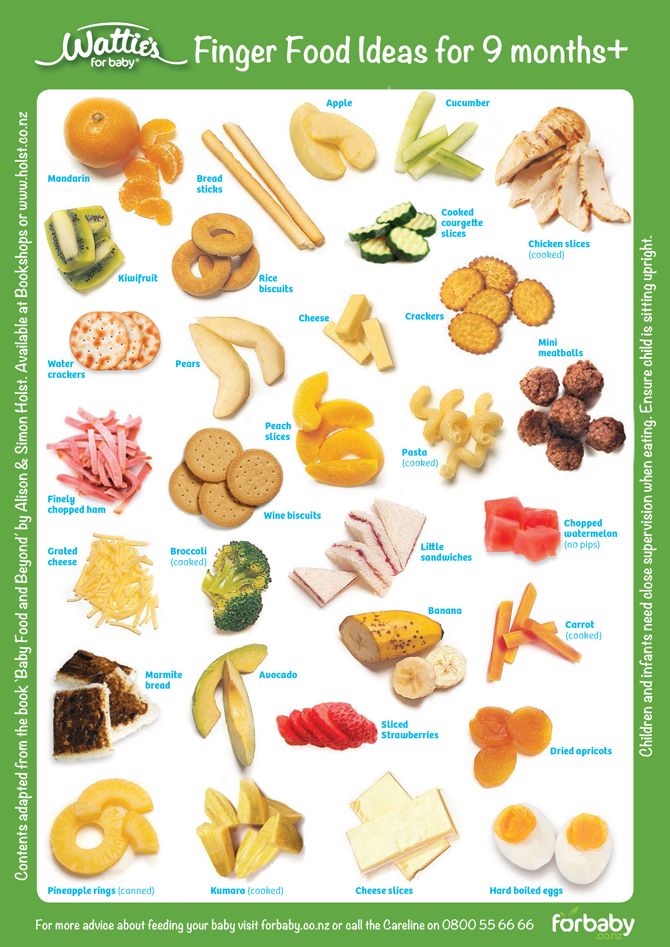When can baby eat 2nd stage foods
What It Is, When to Start, and Options to Try
Accompanying your child through the different stages of learning how to eat real food is an exciting journey. Sometimes, along with the sense of pride — Look, they polished off the whole jar! — you can feel a little confused. How are you supposed to navigate the milestones?
Let’s start at the beginning: What do the stages of baby food mean, anyway?
Rome wasn’t built in a day, and your baby’s digestive system won’t make the leap from liquid to solid in one day either. That’s what the stages of baby food are for — to help your baby manage the mechanics of eating and to make the transition easier on your baby’s digestive system.
Defining the stages across the brands
While the different stages of baby food aren’t standardized (it would make your life easier if they were!), most popular brands more-or-less follow these four stages:
- Stage 1: 4 to 6 months (watery puree of a single ingredient)
- Stage 2: 6 to 9 months (thicker texture that is strained or mashed)
- Stage 3: 10 to 12 months (mush that has soft, chewable, small chunks)
- Stage 4: After 12 months (finger foods and small, soft pieces of foods you share from your own supper)
What is the difference between stage 1 and stage 2 food?
Stage 1 foods are pretty watery. They’re pureed into a smooth paste that can drip off a spoon easily, so stock up on your bibs. These foods are usually made of a single ingredient: oatmeal cereal, apple, carrots. Your baby will start off eating about half a teaspoon of this.
Stage 2 foods get more exciting. These are strained or mashed into a dense paste. They’re made with a combination of foods that can include legumes and even meats or fish. They may combine flavors, like fruit and veggie blends. Your baby’s appetite is growing and you’ll have to keep pace with bigger portions.
At around 6 to 9 months, your baby is probably ready to move on to stage 2 foods. Not every baby will stick to this schedule simply because every child is a world to their own.
Here are some signs that your child is ready to move on:
- Tongue reflex: At around five months, your child will start losing their tongue thrust reflex and won’t immediately push out the food that you try to feed them.
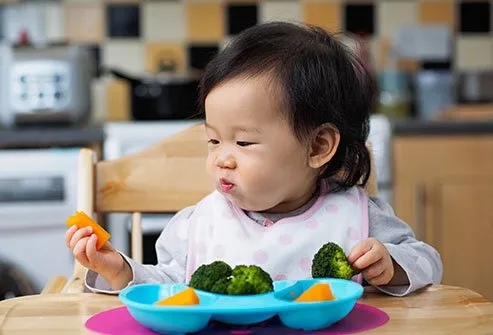
- More please: They’ll easily polish off the stage 1 foods and look hungry for more.
- Variety: They’ll have eaten foods from all the food categories (vegetables, fruits, legumes, grains, meat) and shown no allergy or intolerance.
- Enjoyment: They’re managing spoonfuls of stage 1 foods easily, mouthing and swallowing happily.
At this exciting stage, feel free to give your baby most types of foods. By offering them a wide range of tastes and textures, you’re giving them a foundation for healthy eating habits — as well as making it easier for yourself. Keep in mind the following safety points:
- Choking hazards: Avoid nuts, seeds, and popcorn at this stage. And make sure to slice round foods like grapes and hot dogs lengthwise.
- No honey: Children younger than 12 months should not be given honey because it could lead to a botulism infection.
- No juice: Follow AAP guidelines and stick with breast milk, formula or a little water and steer clear of juices.
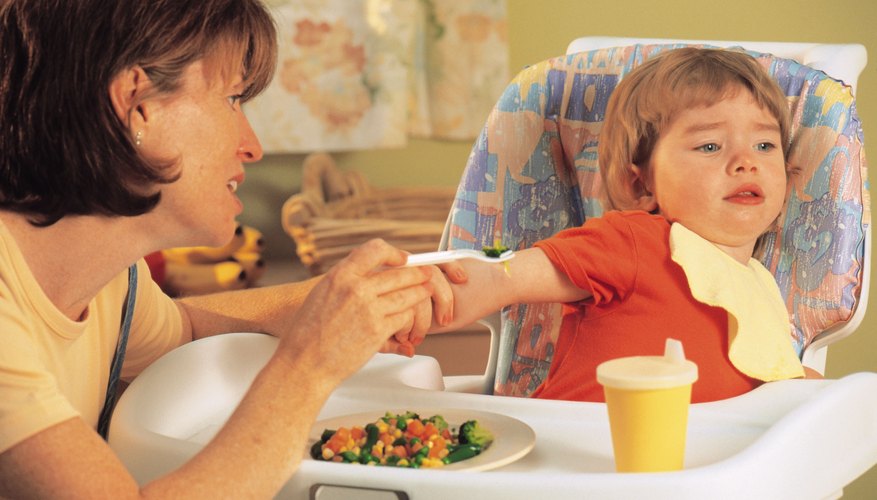
- Safe feeding: Always strap your child into their high chair and keep an eye on them while they’re eating.
And if you’re wondering about peanuts, here’s the scoop: A 2017 release from the National Institutes of Health suggests exposing children to peanut-containing foods as early as 4 months old. (Wait till 6 months for children with mild or moderate eczema.)
Surprised? Don’t be. A recent study suggested that Israeli kids rarely suffer from peanut allergies because they’re munching on Bamba, a peanut-based snack, from as early as 3 months. Talk to your doctor about suggested safe ways to incorporate peanut products into your little one’s diet.
What’s on the menu for stage 2 baby foods? Basically, you can go the store-bought or the homemade route. Or you can mix both depending on how much time you have. It’s up to you and your personal schedule.
Here are tasty ideas for both options.
Store-bought stage 2 baby food
- Plum: These organic blends come in easy-to-transport pouches.
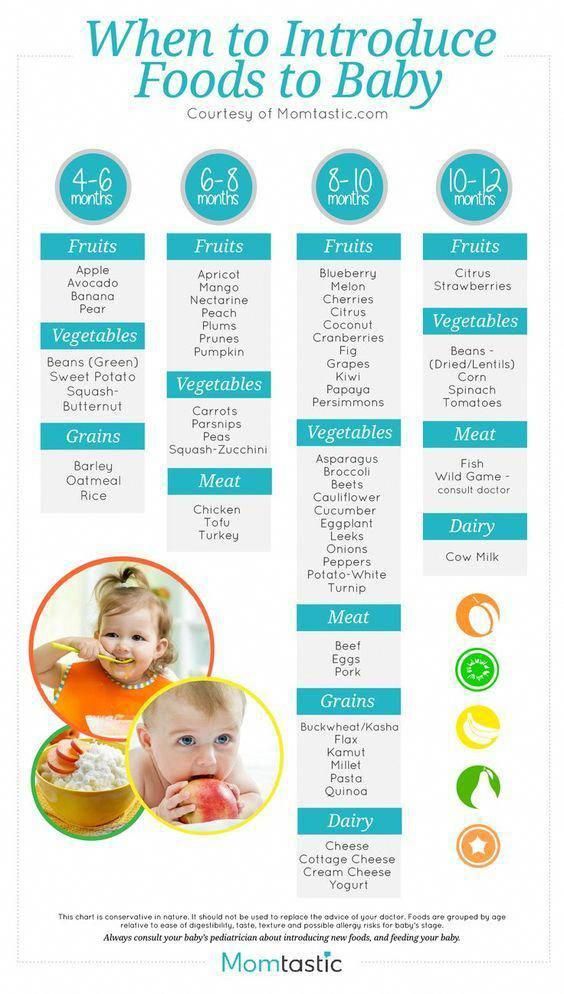 Try pear, spinach, and pea, or banana and pumpkin.
Try pear, spinach, and pea, or banana and pumpkin. - Beech-Nut: Options are available in jars and pouches. Serve up some apples and bananas or pineapple, pear, and avocado.
- Earth’s Best: Another organic option, in pouches or jars. Try sweet potato, barley, and garbanzo or pasta with tomato and white bean.
- Gerber: A classic, whether served up from plastic tubs, jars, or pouches. Flavor combinations include peach mango and oatmeal or chicken noodle dinner.
Remember to monitor your little one while they’re eating. Pouches are handy, but the caps can be a choking hazard. Glass jars are at risk of breaking, so keep them out of baby’s reach. Your baby should always enjoy snacks and meals with attentive adult supervision.
Homemade stage 2 baby food
Cooking up a storm for your baby’s budding taste buds at this stage doesn’t have to be challenging. Here are a few recipes to get you going. (You can find even more baby food recipes here. )
)
Don’t shy away from spices and herbs: your baby will appreciate the added flavor, and the micronutrients in them will give their immune system a boost.
- Apple, butternut, and carrot: Boil the ingredients until they test soft with a fork. Drain some of the water, but set it aside in case you need to thin the mixture. Sprinkle in a little curry and blend.
- Blueberries and chickpeas: You can cook up your own chickpeas or use a prepared version to save time. Mix equal amounts of blueberries and chickpeas. Blend and add breastmilk, formula, or water to get the right consistency. You can also add in some rice for extra oomph and texture.
- Salmon with roasted zucchini and fennel: Spray the salmon and vegetables with oil and broil for about 15 minutes. Add chopped parsley and blend. You can thin the mixture with breastmilk, formula, or water.
Enjoy this stage with your baby because it won’t be long before they move on to the next stages. And then, sooner than you think, you may be facing competition for that last slice of caramel-topped cheesecake.
And then, sooner than you think, you may be facing competition for that last slice of caramel-topped cheesecake.
When is a child ready to try a bit more texture?
Once your baby has mastered the art of slurping down smooth purees, it may be time to expand their culinary horizons with Stage 2 baby food. Your little gourmand isn’t quite ready to dine on a plate of spaghetti and meatballs just yet, but Stage 2 foods will give them the opportunity to sample new tastes, as well as consistencies.
Think your baby is ready to graduate onto the next stage of baby food? Here, parents and experts weigh in on Stage 2 baby food. Bon appetit!
What is Stage 2 baby food?
While the jarred Stage 2 baby food you find at the store is typically combinations of food (“sweet potato and chicken dinner”), it’s important to keep in mind this stage is more about the consistency of the food.
“While Stage 1 baby food is completely pureed, Stage 2 baby food has a bit more texture to it,” says Dr. Zulma Laracuente, a pediatrician in Alexandria, Louisiana. “The concept behind slowly transitioning baby from purees to thicker solids is to get them used to chewing and swallowing.”
Zulma Laracuente, a pediatrician in Alexandria, Louisiana. “The concept behind slowly transitioning baby from purees to thicker solids is to get them used to chewing and swallowing.”
Of course, every child develops at their own individual pace, so check with your child’s doctor for baby food recommendations during the first 12 months.
When to start Stage 2 baby food
The Stage 2 baby food age may vary based on when your infant started eating Stage 1 foods. The general age recommendation for Stage 1 baby food is between 4 and 6 months, so taking into consideration how long — and how well — your child has been eating these foods will help you determine if they’re ready to move up. According to Laracuente, babies are usually ready for Stage 2 between 6 and 8 months old — but make sure your little one has honed their Stage 1 skills before making the leap.
“Once your baby has done well with Stage 1 solids and has tried multiple foods, it is safe to advance to Stage 2 baby food,” says Dr.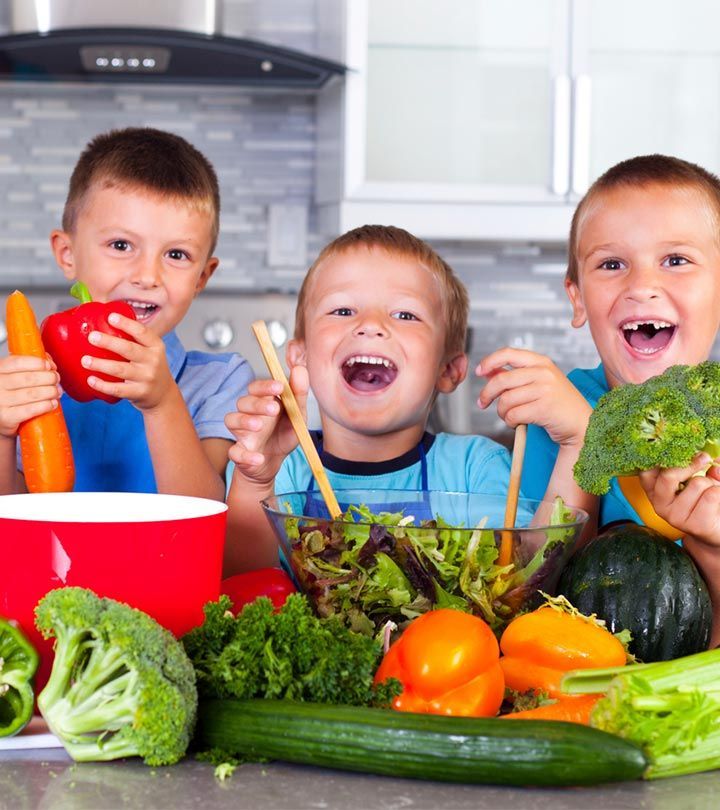 Melanie Custer, a pediatrician at at West Bend Pediatrics at Children’s Hospital of Wisconsin. “These foods usually have multiple ingredients, including some spices and are thicker in consistency.”
Melanie Custer, a pediatrician at at West Bend Pediatrics at Children’s Hospital of Wisconsin. “These foods usually have multiple ingredients, including some spices and are thicker in consistency.”
“These foods usually have multiple ingredients, including some spices and are thicker in consistency.”
DR. MELANIE CUSTER, PEDIATRICIAN
Signs baby is ready to start Stage 2 food
How do you know if your baby is nailing it with their Stage 1 foods and ready for the next step? Simply put, they’re eating and swallowing.
“As your baby’s oral skills develop and improve, you can move on to Stage 2 foods, which are purees with small chunks and texture,” says Jenifer Thompson, R.D., an advanced practice dietician at Johns Hopkins in Baltimore.
Thompson says in order to move on to Stage 2 foods, babies should be consistently taking the spoon in their mouth when you offer it to them, without spitting or pushing it back out.
“Once my baby was no longer grimacing or letting his food dribble onto his chin, I knew we were ready to move onto Stage 2 foods,” says mom of two Darcy McConnell of Garwood, New Jersey. “I actually have no idea how old he was when we made the switch since I based it off of how well he was eating!”
“I actually have no idea how old he was when we made the switch since I based it off of how well he was eating!”
What Stage 2 baby foods to start with
It’s important to expose your child to a number of foods, most of which are safe at this point.
“By the time they are 7 to 8 months, babies should be eating a variety of foods from different food groups, including cereals, meat and other proteins, yogurt, cheese, vegetables and fruits,” says Thompson.
“Most foods can be prepared for any stage, so long as they’re texturally age-appropriate,” says Dr. Kristen Treegoob, a pediatrician at Children’s Hospital of Philadelphia. “When we think of Stage 2 baby food, we’re thinking of thicker purees with some mashable bits.”
Experts advise introducing as many different foods as possible during this stage of food development so your baby gets accustomed to them.
“While bananas, applesauce and peaches are good options and most babies like them, as they are naturally sweet, it is also important to try other foods that aren’t as common and popular, such as beets, rhubarb and asparagus, so they develop a taste for them,” says Custer.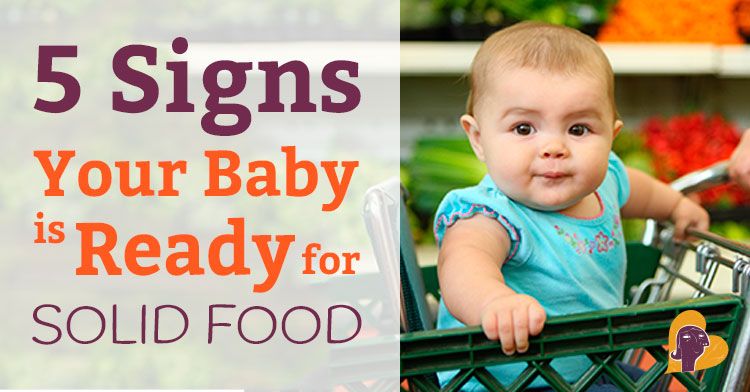
Another thing to keep in mind is that the American Academy of Pediatrics (AAP) no longer recommends delaying the introduction of allergenic foods, particularly peanuts. While it was once advised to wait until your baby was at least 10 months to introduce peanut-containing foods, the AAP now recommends giving babies with no known egg allergy or eczema, infant-safe forms of peanut between 4 to 6 months old. Babies with mild eczema should wait until at least 6 months, and for babies with severe eczema, speak to their doctor before giving them peanut-containing foods. (To find out if your baby has an egg allergy, they must be tested by their pediatrician.)
Which foods to avoid during Stage 2
Even though your little one is venturing into new food texture territory with Stage 2, you should still avoid giving them chunks and small pieces of food, which can pose a serious risk. (Food may be thicker at Stage 2, but it’s still all about the purees and mashes at this point.)
“Infants may have any food that is texture-appropriate for their developmental feeding stage, but it’s important to stay away from choking hazards, such as whole grapes, nuts and seeds,” says Treegoob.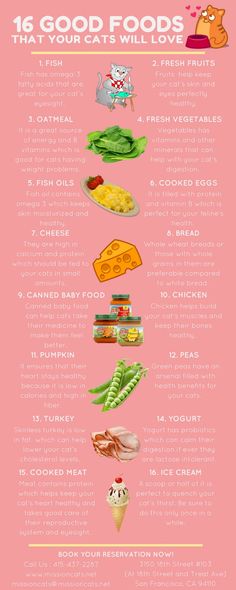
“Infants may have any food that is texture-appropriate for their developmental feeding stage, but it’s important to stay away from choking hazards, such as whole grapes, nuts and seeds.”
DR. KRISTEN TREEGOOB, PEDIATRICIAN
Also, avoid giving your baby honey — raw or cooked — before the age of 12 months, as it may cause a botulism infection.
And finally, when it comes to your baby’s beverage, steer clear of juice. The AAP recommends parents eschew juice, which has “no nutritional benefits over whole fruit,” until at least 1. “At this point, it’s best to stick with breast milk, formula or the odd bit of water (1 to 2 ounces a day), which is mainly for introducing your baby to the skill of using a sippy cup,” says Thompson.
How to start Stage 2 foods safely
Baby should be sitting in a highchair when eating and never left alone. You’ll still be spooning food into your baby’s mouth at this point, but don’t be afraid to let your little one take a whirl at self-feeding in order to get in some practice using utensils.
“At around 9 months, we started letting our son try his hand at feeding himself in his highchair,” says mom of two Erin Henderson, of Waltham, Massachusetts. “It was a mess, but he obviously enjoyed the learning experience.”
Also, during the latter half of your baby’s Stage 2 stint, they may learn how to grab things with their thumb and forefinger and bring them to their mouth.
“Between 8 and 12 months, babies develop the pincer grasp ability and should be able to pick up small pieces of finger food, such as Cheerios or puffs,” says Thompson.
As your baby grows and hones their eating skills, they’ll cut down a bit on how much breast milk or formula they drink — but keep in mind, that should still be their primary source of nutrients.
“Most infants will naturally start to moderate their breast milk or formula intake once their solid intake increases,” says Treegoob. “Solid food may start to account for a significant source of nutritional intake closer to 7 to 9 months. At this time, parents may notice that their baby shows interest in smaller or less frequent bottle or breastfeeds. As long as their weight remains on track and baby is drinking enough milk to stay well-hydrated, there should be no need for concern. Infants typically take somewhere between 24 to 40 ounces of breast milk or formula between 4 to 6 months and 24 to 32 ounces from 6 to 9 months.”
At this time, parents may notice that their baby shows interest in smaller or less frequent bottle or breastfeeds. As long as their weight remains on track and baby is drinking enough milk to stay well-hydrated, there should be no need for concern. Infants typically take somewhere between 24 to 40 ounces of breast milk or formula between 4 to 6 months and 24 to 32 ounces from 6 to 9 months.”
According to the AAP, babies should be eating about 4 ounces of solids (about one small jar of baby food) at each of their meals. And if you’re wondering how long baby food lasts, experts typically recommend 24-48 hours in the fridge or up to 3 months in the freezer.
Lastly, bear in mind that if at first you don’t succeed with a food, try, try again.
“At this age, if babies grimace when taking a bite or shake themselves, it is most often because of a texture issue, not the actual taste,” says Custer. “It is important to keep introducing these foods as it may take a baby up to 15 times to get used to a texture before you can say for sure he/she doesn’t like it. ”
”
Ready for the next stage?
- Stage 3 baby food
Union of Pediatricians of Russia
Nutrition for children from 1 to 3 years of age
The period from 1 to 3 years of life is a crucial stage in the transition to an adult type of nutrition, which has certain features. In order to ensure that all the necessary nutrients enter the child's body and at the same time prevent an excess of individual nutrients, nutrition should be balanced and varied.
The daily amount of food for children aged 1 to 1.5 years should be 1000-1200 g, from 1.5 to 3 years - 1200-1500 g, the amount of food in one feeding should not exceed 300-350 ml. The diet consists of three main meals per day and two snacks. It is considered optimal when breakfast is 25% of the total energy density of the diet, lunch is 30–35%, dinner is 20%, and additional meals are about 10%. In general, the child can eat the same food as the rest of the family.
In the diet of a child of 1–3 years of age , must be present daily: meat of animals or poultry, dairy and sour-milk products, vegetables, fruits, bread, cereals, vegetable and butter; fish and eggs are included in the diet 2-3 times a week.
Cereal products: bread - 2-3 servings per day, cereals and side dishes - 1 time per day
Fruit and/or vegetables: at least 5 times a day
Dairy products: at least 3 servings per day (including those used to make cereals, yoghurts, fermented milk drinks, cottage cheese, infant formula or breast milk).
Domestic pediatricians recommend that when preparing a diet for children aged 1–3 years, preference should be given to specialized children's dairy products of industrial production that meet high quality requirements and safety indicators for this age. Most children's dairy products are additionally enriched with vitamins and/or minerals and other biologically active components, taking into account the physiological needs of children of this age. At the same time, in foreign recommendations, children over 1 year old are offered the gradual introduction of whole cow's milk, which is rich in fats necessary for proper growth and development, the absorption of vitamins A and D, the development of the brain and nervous system of the child.
Meat dishes: 2-3 times a day
Fish dishes: 2-3 servings per week
Eggs: 2-3 per week
Dietary fats: 3-4 teaspoons of butter and/or vegetable oils per day
When cooking, use the minimum amount of salt and sugar, and do not add them to industrial products.
Offer your child a variety of foods and let them choose for themselves. Children love to eat on their own, so if possible, offer food that your child can eat with their hands.
It is important to remember that a baby can choke on pieces of food, so whatever you give your baby should be crushed or cut into small pieces that can be easily chewed.
Do not give to a small child: nuts, whole grapes, cherry tomatoes (unless quartered), whole carrots, seeds (such as pumpkin or sunflower seeds), round candies, legumes, raisins, because a child can eat them choke.
Also in the diet of children of the first 3 years of life should not be present:
Mushrooms; canned snacks, pickled vegetables and fruits
Home canned food
Dry concentrates for side dishes
Hot sauces, mustard, horseradish, pepper, vinegar, mayonnaise
Natural coffee
Juices and drinks in the form of dry concentrates; sweet carbonated drinks
Products containing food additives (flavorings, dyes of artificial origin, including chewing gum), popcorn
Combined fats; cakes and pastries
It is important to remember that children of this age should not be given too spicy and spicy foods. Tarkvanem
Tarkvanem
- An infant between the ages of 6 months and a year must begin to receive complementary foods in addition to breast milk in order to cover the need for energy and all nutrients.
- Gradually, as the child grows, you can switch to regular food (prepared from unprocessed raw materials, without the addition of salt and sugar).
- Babies over one year of age can continue to receive breast milk in addition to complementary foods or regular meals, but by 2 years of age, the child should mostly switch to regular food. In addition to the protective properties of breast milk, depending on the mother's diet, the milk tastes slightly different each time, which further helps the baby to accept different tastes when forming eating habits.
- When choosing complementary foods and regular meals, it is important to ensure that there is a variety of meals on offer. Both when breastfeeding, and when switching to complementary foods and regular food, babies can experience colic or allergies.
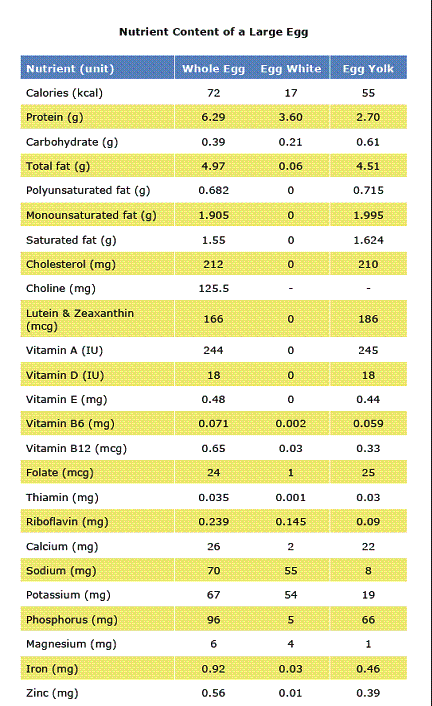 Therefore (including during breastfeeding) those foods should be avoided or used with caution, in relation to which the mother herself or the father of the child was sensitive in childhood or remains sensitive in adulthood.
Therefore (including during breastfeeding) those foods should be avoided or used with caution, in relation to which the mother herself or the father of the child was sensitive in childhood or remains sensitive in adulthood. - For children over 2 years of age, the recommendations for nutrition and food selection are similar to adults, but in absolute terms, the recommended amounts are smaller.
- Remember not to teach your child to drink juice, let alone sugary drinks.
Meals
The baby's belly is small, so they need to eat more often and in smaller portions. At the same time, in terms of dental health, you should not eat more than 5 times a day. That is, 3 main meals and 1-2 small snacks are ideal.Breakfast
- Breakfast is the most important meal of the day - it provides the body with energy so that the child can play and learn new skills.

- If the child is already on a regular diet, porridge is the best choice for breakfast. Make it with a variety of grains, mixed grains, or whole grains. Porridge can be cooked with milk, water or a mixture of both (for children under the age of one who do not receive breast milk, with a subsequent milk formula). Milk mixtures cannot be boiled, so they are always added to food at the end of cooking. Do not add salt and sugar. Instead, flavor your porridge with a variety of fruits and vegetables (e.g. banana, peach, carrot).
- Egg dishes work well, but try to add vegetables to them too.
- For a small child, the best drink is milk (breast milk, formula milk) or water.
- You can give your child a few glasses of juice a week, but it's best to have it as a snack to make breakfast more energizing. Always prefer whole fruits to juices.
- On Sunday mornings, you can offer pancakes, for example. We repeat, cook them without adding salt and sugar, but add either immediately to the dough, or then berries-fruits.

- If the child attends kindergarten, weekday breakfasts should be adapted according to whether the child eats breakfast in the garden and what time he eats it. Breakfast does not need to be eaten immediately after waking up, but it is useful to have breakfast within an hour.
Snacks
- Snacking is important on infants and young children's menus because a young child can only eat a small amount of food at a time. Snacking gives him energy and various important nutrients needed for development and growth.
- Snacks should be as unprocessed as possible (eg, fresh or dry fruits and berries, vegetables, bread, juice, oatmeal, sandwiches, unflavored yogurt, also cottage cheese for children older than one year).
- Candy, crackers, cookies, soft drinks, juice drinks, ice cream, etc. are not good snacks. Even one candy or cookie between meals can spoil a child's appetite for the whole day.
- Do not give your child food as a prize or consolation, or if the child is bored.
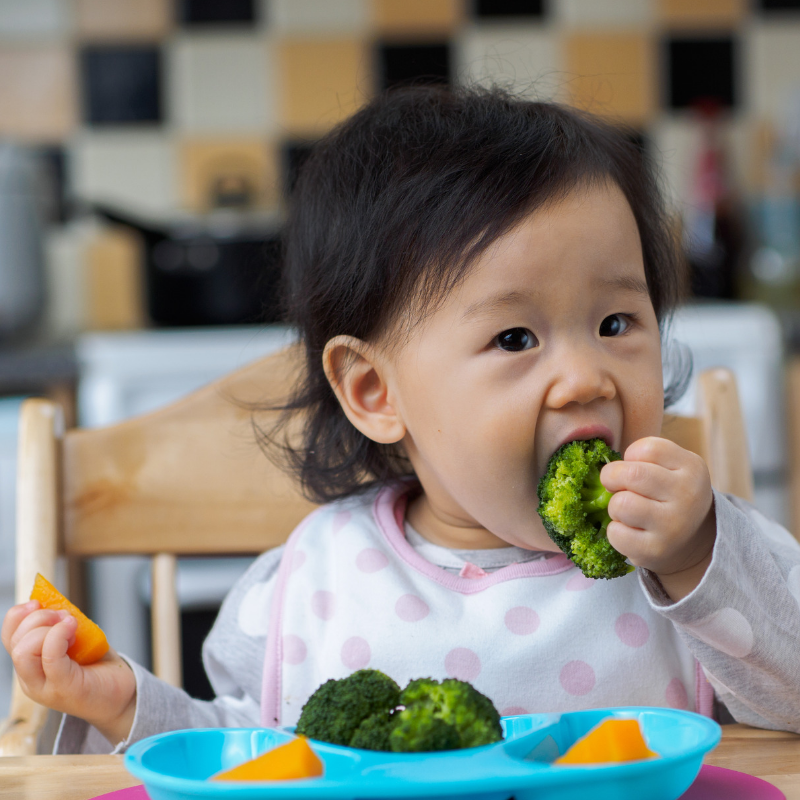
Lunch and dinner
- Lunch and dinner can be heavy especially lunch. Soups and a slice of bread with soup go very well, as well as a dessert using a minimum amount of sugar, or even a small second.
- The smaller the child, the more stewing-boiling should be used in cooking his food. Perfect for a variety of casseroles. Since children want to see what ingredients food is made of, teaching a child to eat mixed dishes from infancy can hide vegetables in them that children do not really like.
- For dinner, a thick salad of vegetables is suitable, in which you can add an egg, cheese, fish, meat, homemade cheese or something else. If the child eats properly in the garden, the food offered at home should not be very energy intensive. Dinner can be a specific time that the family spends together where they can talk about the events of the day and be together. Here you can discuss the menu for the next day, as well as prepare for the weekend.
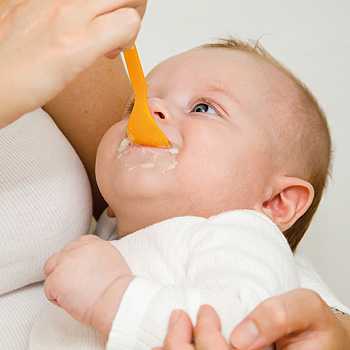
- A child should be taught to eat right and healthy from an early age. Habits formed in childhood often influence the choices we make later in life. Some children are quite selective in terms of what he eats and what not; It is important that you, as a parent, be an example to your child and encourage and support healthy eating habits.
- Breast milk tastes sweet, so most babies have a natural craving for anything sweet. At the same time, a child who received breast milk is more even about new tastes, because through breast milk he felt different tastes and it is easier to offer him new dishes.
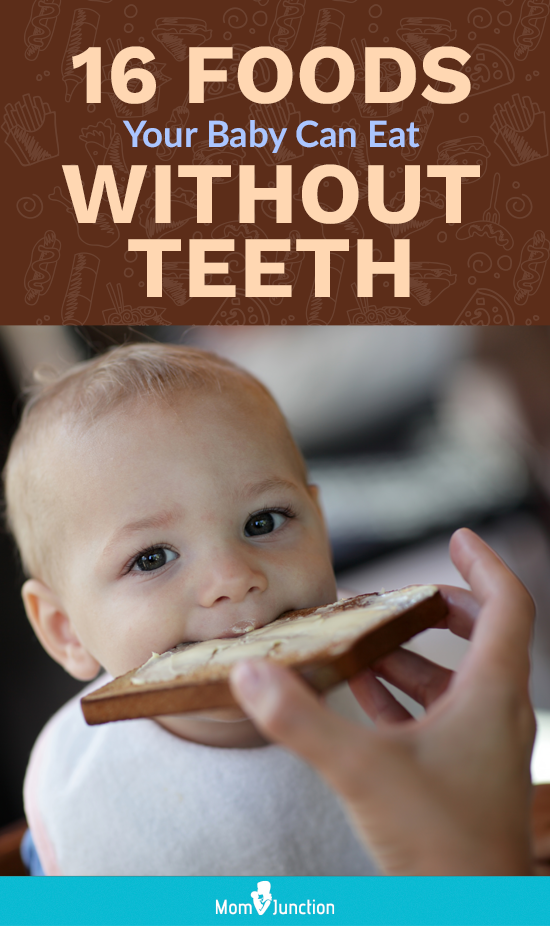
- Sometimes a child may refuse certain foods, it may take up to 15 attempts before the child gets used to a new food. Be consistent in your decisions, feed your child with all the products necessary for his development, do not give up even when the child refuses for the first time or the first time. If the child actually completely refuses to eat something, change this product to something similar. The most important thing is not to give up. If you are breastfeeding your baby often enough at the same time, there is no need to worry about the baby, even if it takes several months to introduce new foods along with breast milk.
- Young children in their food preferences are guided by two main factors - whether they are familiar with food and the taste of food (sweetness). For children under 4 years old, the most important thing is that the child knows what kind of food it is. Therefore, new products must be introduced carefully and in small quantities, leading by example.
 Getting used to new foods takes time. If you do it carefully and in a playful way, the children will be very interested. The more natural flowers will be presented on the plate, the more beautiful and appetizing the dish will be, the more it will contain various essential nutrients.
Getting used to new foods takes time. If you do it carefully and in a playful way, the children will be very interested. The more natural flowers will be presented on the plate, the more beautiful and appetizing the dish will be, the more it will contain various essential nutrients. - When eating, the child's mood and environment (for example, whether the TV is playing or there are guests) are important, as well as whether the child is hungry.
- For eating, it is imperative to set aside time to enjoy food. When eating together with the family, the child will eat faster, the example of parents is important from early childhood. Enjoy each other's company while eating.
- Appearance and correct food temperature are important for a child. The child will eat with great appetite if he sees what ingredients the food was prepared from. Try different foods and cook them in different ways to ensure food variety and availability of different nutrients.
- Teach your child to choose foods from different groups so that he understands what a variety of food is.
 Give your child the opportunity to choose their own food from suitable foods: this or that fruit, various grains, various vegetables, etc. Teach children to eat plenty of vegetables from an early age. To quench your thirst, offer water, not juice.
Give your child the opportunity to choose their own food from suitable foods: this or that fruit, various grains, various vegetables, etc. Teach children to eat plenty of vegetables from an early age. To quench your thirst, offer water, not juice. - A child should never be scared about food. Food is not a means of punishment or reward. Do not force the child to eat, rather attract. If you force a child to eat, it greatly affects the psyche and behavior of the child and can leave a negative imprint on his entire subsequent life.
The most important child nutrition keywords:
- example
- meal together
- availability of suitable food
- explanatory work
- time
- choice and decision making
- When a baby is born (recommended already during the mother's pregnancy), it is the last time to review the eating habits of the whole family.
- An example is one of the factors that will begin to shape the nutrition of a young child.

- A child's eating habits are also shaped by what choice of food is available to the family (including the child), how meals are organized at home, etc. First of all, they will begin to influence a child older than a year.
- Many children aged 2-3 are already in nursery or kindergarten, and often spend time at home only in the evenings or on weekends. These meals should form a conscious choice. Children can discuss with children and direct their nutritional wishes.
There are many ways to offer fruit and vegetables to your child:
- The child likes to eat with fingers, sticks, matches. Why ban it?
- As a snack before dinner, after coming home from kindergarten or while watching TV, offer your child instead of chips carrot slices, apple slices, etc.
- On the birthday table, children love sliced carrots, paprika, cucumbers and pieces of cauliflower with dipping sauce. Why not offer fruit on a skewer (melon, pear, watermelon, grapes).

- If you are in a hurry and don't have time to eat, keep a fruit handy that you can give your child a snack.
- For children, the size of fruit or vegetable pieces and how they are processed may be important. A child may prefer a whole carrot over a grated carrot salad or a stewed carrot dish.
- Young children do not like to chew on large and hard carrots, but they will eat carrots cut into slices with pleasure. It is especially difficult for children to cope with carrots with a hard core.
- If the child does not eat fresh fruits and vegetables at all, then cut them into molds (a month, a heart), maybe you will like it? Why not do it with the kids?
- A child can happily eat a small round sandwich with a face made of vegetable pieces.
- If you are making a salad for children, consider their wishes. As a rule, children like to eat different foods separately.
- A child who does not eat boiled rutabagas or carrots will gladly eat them raw.
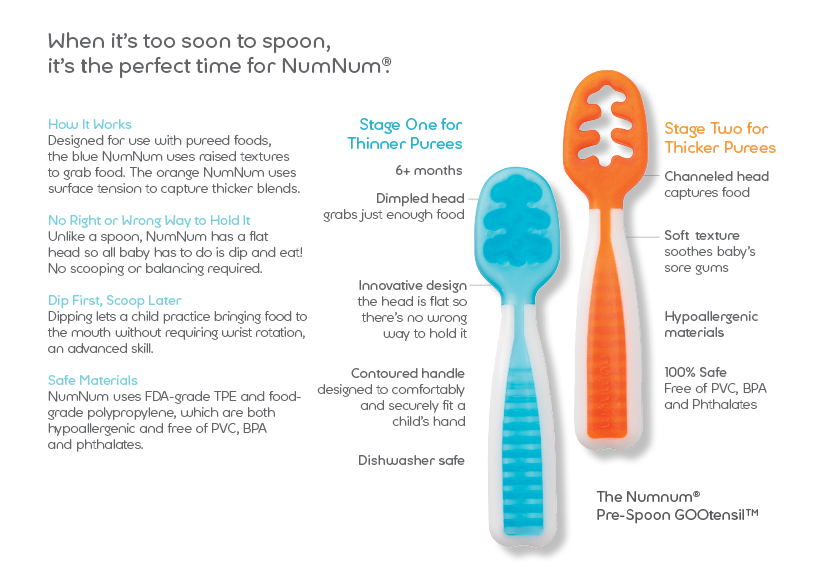 A child who does not want to eat raw carrots will gladly eat them boiled in vegetable stew.
A child who does not want to eat raw carrots will gladly eat them boiled in vegetable stew.
There are many different uses for fruits and vegetables.
Fruits and vegetables do not have to be eaten fresh or boiled, they can be discreetly added to various dishes:
- soups, stews, casseroles, wok
- pasta, sauces, cereals, meatballs
- herbs (e.g. dill, parsley) for seasoning dishes
- in pies, cakes, pizzas
- fresh berry sauces for desserts, fruits in jelly and jelly
- in smoothies, milk and juice drinks
Get your child used to a variety of simple salads, such as carrot or kale salad. But to get the child used to different tastes, try other salads, for example, a salad of sauerkraut, pumpkin, onions (bulb and green).
Children grow in periods, which means that there may be times when the child eats too little, and there are times when he eats more.
- It is useful to ensure that food intake and energy expenditure are balanced.

- If the child is very active, he should eat more.
- If the child seems to be eating too little or too much, you should keep a food diary - for about a week, write down everything that and how much the child ate and drank.
- If the child has a bowel movement every day, then the amount of food for the child is sufficient, there is no need to worry. Often it turns out that the problem is not in the amount eaten, but in the choice of food. After all, you can get as much energy from a couple of candy cookies as from a good portion of soup. Therefore, it is unreasonable to immediately grab a jar of vitamins and minerals, first of all, nutrition should be reconsidered - sufficient, balanced and varied nutrition will provide the necessary substances. The only exception is vitamin D, which all children should receive as a dietary supplement.
- If a child has access to a varied and balanced diet, he grows and develops according to his age, there is no cause for concern.
 If parents still feel that the child may not be getting all the necessary nutrients in sufficient quantities, from time to time blood tests can be done by a doctor to check the health.
If parents still feel that the child may not be getting all the necessary nutrients in sufficient quantities, from time to time blood tests can be done by a doctor to check the health.
- Ideally, it would be better not to give sweets (candy, chocolate, cookies, soft drinks, etc.) to children under 3 years of age.
- Candy or biscuits should never be given to children as a consolation, reward, or dispersal of boredom - on a subconscious level, this may affect his eating habits in the future. This recommendation is quite difficult to follow if the family has older children, but in this case, avoid bringing home sweets (sweets, cookies) and keep them on the table. Instead, put peeled-cut fruits and vegetables on the table.
- To satisfy the desire to eat something sweet, nuts and dried fruits and berries are suitable, but one should not be too zealous with them either. Babies and young children can only be given nuts in a ground or highly ground form, and make sure that children do not have an allergic reaction to them.
 Clean water should always be available to quench thirst. You can drink up to two glasses of juice per week. If necessary, dilute the juice yourself, do not buy nectars, juice drinks and syrups in the store, not to mention soft drinks. While vitamin-fortified water is thought to help you get enough vitamins, one 750 ml bottle actually contains about 40 grams of sugar, which is about the daily dose of sweets for an adult. A varied, balanced, and regular diet (including cereals, fruits and vegetables, and other food groups) ensures adequate intake of vitamins, minerals, and macronutrients, as well as energy, and reduces the desire to eat something sweet.
Clean water should always be available to quench thirst. You can drink up to two glasses of juice per week. If necessary, dilute the juice yourself, do not buy nectars, juice drinks and syrups in the store, not to mention soft drinks. While vitamin-fortified water is thought to help you get enough vitamins, one 750 ml bottle actually contains about 40 grams of sugar, which is about the daily dose of sweets for an adult. A varied, balanced, and regular diet (including cereals, fruits and vegetables, and other food groups) ensures adequate intake of vitamins, minerals, and macronutrients, as well as energy, and reduces the desire to eat something sweet.
- The risk of being overweight in adulthood is higher in infants who received formula and supplementary foods instead of breast milk as infants.
- It is very likely that an obese child will grow into an obese adult. Fortunately, serious obesity among children aged 0-3 years is very rare and is primarily associated with more serious diseases.
 At the same time, it is absolutely possible to feed a 2-3-year-old child if he is indiscriminately offered sweets, chocolate, cookies, pastries, soft drinks, etc.
At the same time, it is absolutely possible to feed a 2-3-year-old child if he is indiscriminately offered sweets, chocolate, cookies, pastries, soft drinks, etc. - To check whether the child is growing and gaining weight normally, you can look at the growth and weight curve of infants and children, and in case of underweight or overweight, it is imperative to consult a family doctor or pediatrician for further instructions. You can not limit the nutrition of the child, guided by their own ideas.
Many young children go to nursery from about 1.5 years old. This means that often on weekdays the child eats out three times - breakfast and lunch, as well as dinner. According to how much time the child spends in kindergarten, how many times and what he eats, it is necessary to form the child's home meals. The body needs to be regularly provided with the necessary amount of energy, so it is important to stick to daily meals. Keep up to date with the weekly menu in kindergarten, make different options for homemade dinners or weekend lunches. The more different tastes and dishes you introduce your child to from an early age, the easier it will be for him to get used to food in kindergarten.
The more different tastes and dishes you introduce your child to from an early age, the easier it will be for him to get used to food in kindergarten.
In Estonia, food regulations have been developed in pre-school child care institutions, which are regulated by an order of the Minister of Social Affairs.
It is not so easy for children under one year old, even under 2 years old, to find the right food if you are not eating at home. Meals offered to children often include too much salt or sugar. Children's meals may appeal to children (often due to their high fat, sugar and/or salt content), but their nutritional value is often very low. Instead of children's meals, it is better to choose a regular dish or soup and ask for it to be prepared with as little salt as possible. The food offered in fast food places is generally not suitable for children under 3 years old (and in fact, adults).
- When a child turns one year old, the dishes offered on the occasion of his birthday are intended primarily for visiting adults and other children.

- Depending on the age of the children, their age recommendations can be used.
- Food offered to the birthday person must be prepared without salt and sugar. Sweets, soft drinks, potato chips and other products that are very popular at children's birthdays are best removed from the festive table of a child who is one year old, and even 2 and 3 years old.
- Dishes on the festive table of a 2-3-year-old child should have a mild taste with minimal or no added salt and sugar.
- Child-friendly chopped vegetables such as carrots, paprika, cucumber and cauliflower pieces with unflavored yoghurt dip.
- You can offer fruit on a skewer (melon, pear, watermelon, grapes).
- If desired, you can prepare more dense dishes (salads, homemade pizza, etc.), but they must be prepared from minimally processed raw materials.
- If you offer baked goods, try to find low sugar options (raw sugar, agave syrup, etc. are not good alternatives).

- Always read the label on food packaging! This will help you make a more informed choice.
- The allowable amount of supplements for children is usually less than for adults (the maximum amount is based on adult body weight). Therefore, be careful with colored sweets, drinks, cookies with a long shelf life, desserts and sausages, products containing synthetic sweeteners.
- If the child is old enough to participate in the grocery shopping, let the child choose between suitable foods: one or another fruit, various cereal products, various vegetables, etc.
- Avoid the shelves with sweets, cookies, soft drinks, etc., so that the child does not have a desire to buy sweets. Ideally, it would be to introduce the child to sweets, etc. in small quantities and rarely, and also as late as possible, and exactly after the third year of life. Unfortunately, this recommendation is difficult to follow if there are older children in the family.
- What to do if the child in the store constantly whines and cries to get what he wants? Read practical tips here.
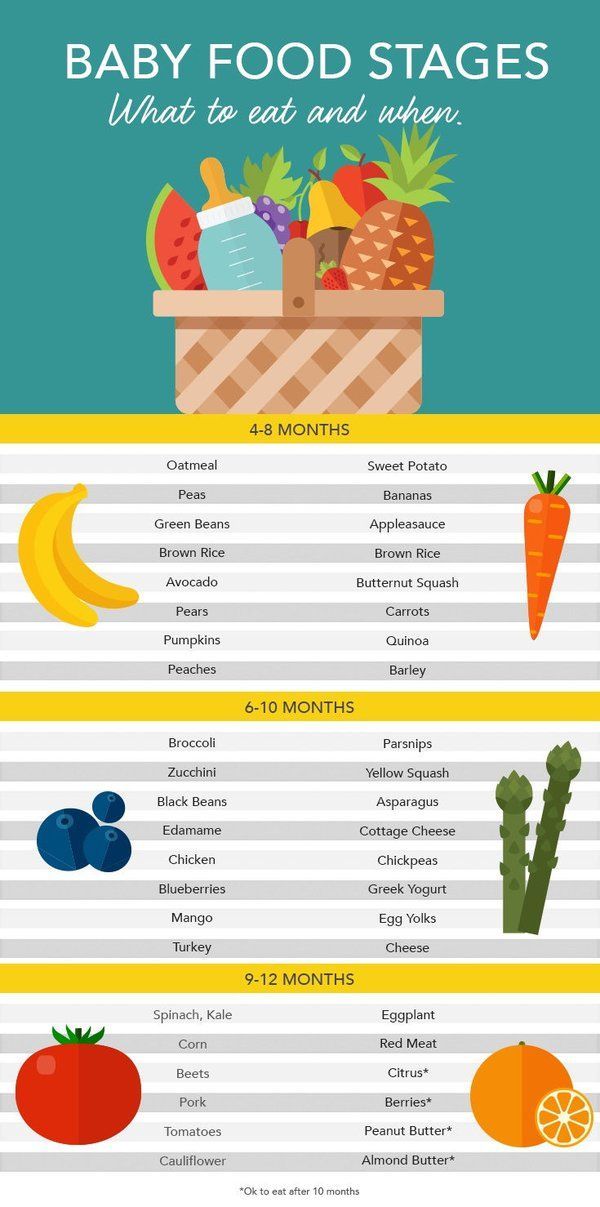
- Children under 3 years of age should not and should not be given gadgets, especially with meals.
- The child should not be taught to watch TV while eating, as this takes attention away from the meal and in turn creates poor eating habits in the child. While eating, all attention should be paid to the process of eating.
- Children under 3 are usually very active and need extra energy.
- The principle of a healthy lifestyle is that the amount of energy received from food and the amount of energy expended are in balance.
- All children should be as active as possible from an early age - climbing, crawling, walking, jumping, chasing a ball, playing in the yard. Parents themselves should orient their children to the movement, be an example to them.
- Mobility habits formed in childhood are the basis for adult mobility habits.
- Before eating and preparing food, you and your baby should always be thoroughly washed to prevent possible germs that cause disease from getting into the stomach.







